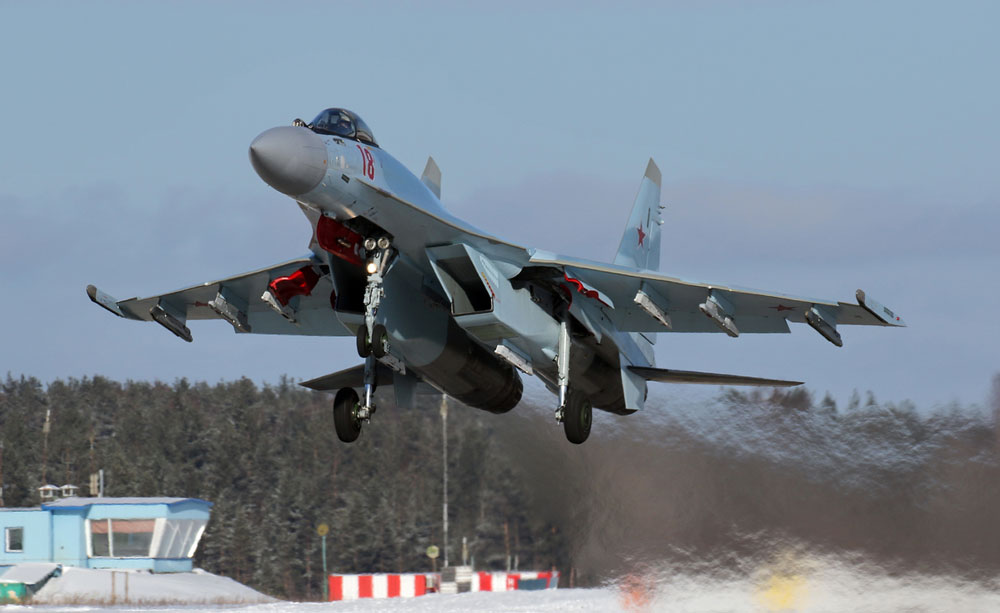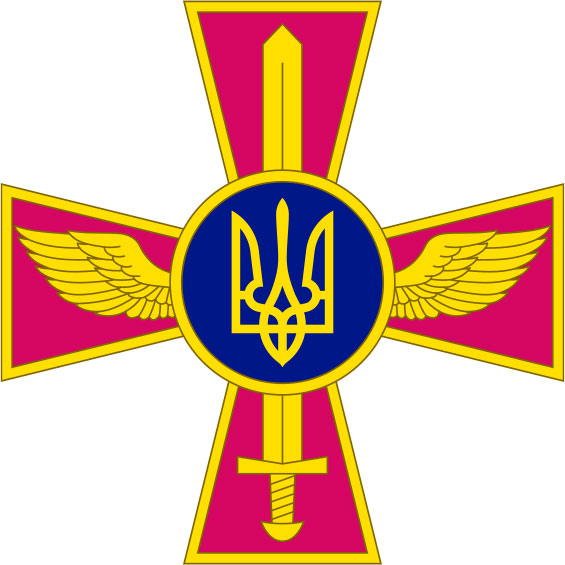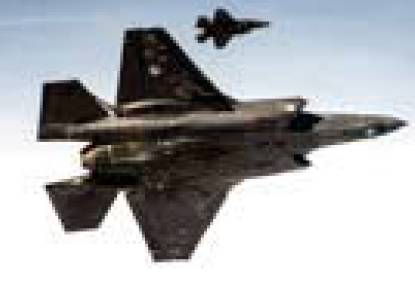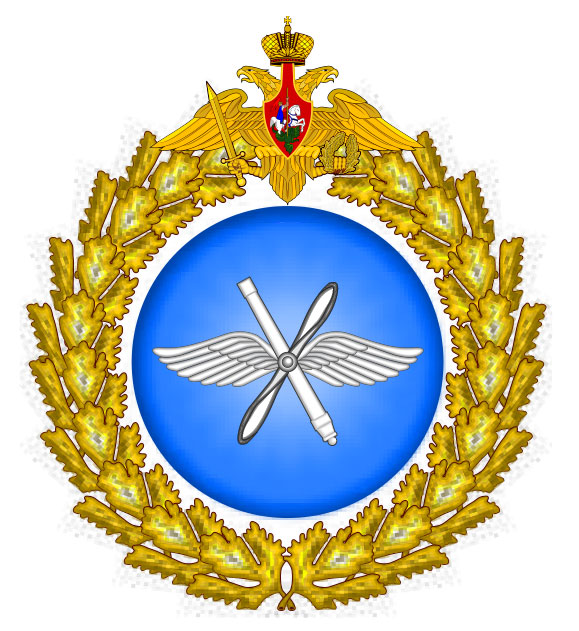DEFENCE Ukraine crisis and air power
Darkening skies above Ukraine
PETER HOARE from the Royal Aeronautical Society’s Air & Space Power Specialist Group analyses the air power implications from the unfolding crisis in Ukraine
 Russian Su-35 multirole fighters have been deployed to Belarus. Russian MoD
Russian Su-35 multirole fighters have been deployed to Belarus. Russian MoDThe diplomatic tension surrounding Russia’s posture for a potential invasion of Ukraine remains at fever pitch, despite claims from Russia that they are withdrawing troops from border areas. Although most of the reporting has surrounded Russian land forces, it is worth examining some of the air power activities and implications. Latest estimates indicate that Russia has amassed c150,000 troops on the various borders of Ukraine.
On 18 January, a joint Russian-Belarussian ‘snap’ combat readiness exercise, UNION RESOLVE, was announced, due to run until 20 February. As part of this exercise, Russia announced the deployment of Eastern Military District fighters and close support aircraft. Reportedly, a squadron of Su35s was joined by two groups of attached Su25SM close support aircraft, two SA-21 batteries of long-range air defence missiles and air assault forces. Likely meant to further increase diplomatic leverage, the air deployment to Belarus, nevertheless, signaled the first specific indications of increased air power.
 Clearly in Ukraine there has been widespread fear about Russia’s military build-up and what it might mean. Speaking to Bloomberg on 24 January, the Ukrainian Ambassador to the UK, Vadym Prystaiko was quick to point out gaps in Ukrainian air defence for which he wanted support from allies.
Clearly in Ukraine there has been widespread fear about Russia’s military build-up and what it might mean. Speaking to Bloomberg on 24 January, the Ukrainian Ambassador to the UK, Vadym Prystaiko was quick to point out gaps in Ukrainian air defence for which he wanted support from allies.
There has been speculation about how Russia might use its air power as part of an invasion. In a classic sense, it would undoubtedly start with establishing control of the air which, on paper, looks very straightforward for Russia. They have proved before, such as in Syria, that they can rapidly move air defence systems and the SA-21 move to Belarus is an early indication of this. The SA-21 is part of the S400 integrated air defence system (IADS) which is far superior to the older S300, which Ukraine has, and has not proven to be that effective in Syria.
In addition, there have been reports of mobile jammers and air surveillance radars deployed as part of the exercise. The combination of these assets in Belarus and along Russia’s western border with Ukraine present a significant air defence advantage for Russia. As a result of the Russian build-up and the risk of miscalculation several civilian air carriers have cancelled flights into and through Ukrainian airspace.
Nevertheless, integration of sensors, weapons and fighters in an air defence sense has previously proved to be a challenge for Russia, with some suggesting that it is their Achilles heel. Undoubtedly, the vulnerabilities of the Russian air defence systems will be under very close scrutiny by Western allies to examine where they might be able to disrupt its effectiveness. Of course the Russian air force would completely overmatch the Ukrainian air force which is a mix of legacy Russian platforms (MiG29, Su-24, Su-25) which have been written down in recent years due to the ongoing conflict in the Donbas region.
 The Netherlands will send two F-35s to Bulgaria in April to support NATO Enhanced Air Policing. RNALFWhat would come next from Russia would be interesting to observe. It seems unlikely that some sort of ‘shock and awe’ aerial campaign would be undertaken, as this would meet with international indignation and almost certainly cost Russia economically. They certainly have the capabilities and observers have been quick to point out that Russia’s third-biggest bomber fleet (after the US and China) would not even have to leave Russian airspace to launch long-range strikes against Ukraine.
The Netherlands will send two F-35s to Bulgaria in April to support NATO Enhanced Air Policing. RNALFWhat would come next from Russia would be interesting to observe. It seems unlikely that some sort of ‘shock and awe’ aerial campaign would be undertaken, as this would meet with international indignation and almost certainly cost Russia economically. They certainly have the capabilities and observers have been quick to point out that Russia’s third-biggest bomber fleet (after the US and China) would not even have to leave Russian airspace to launch long-range strikes against Ukraine.
There are 76 Bear and Blackjack bombers equipped with 3,000-mile range KH101 cruise missiles that could be employed. Nevertheless, the indiscriminate nature of the bombing would undermine Russia’s likely strategic goal of reclaiming Ukrainian territory without inciting international responses. So, this probably leads to a more measured air plan of direct support to ground forces using close air support and UAVs.
Again, Russia is not short of capability here, although announcements of international allies providing tactical air defence systems, like Stinger, present some challenge to Russia, albeit a limited one.
Some suggest that the 2020 ‘Second’ Nagorno-Karabakh War is instructive here, as it was considered seminal in the sense that UAVs had a ‘game-changing’ impact on ground operations. It is estimated that Armenia lost 224 tanks in comparison to 36 from Azerbaijan.
 It is very noteworthy that Azerbaijan was operating the Turkish-supplied Bayraktar TB2 Combat UAV which proved to be very lethal, to the point that Turkey received widespread criticism and commercial actions against Bayraktar from Canada. Although relatively short-ranged (150km), it has a 24 hour loiter time. What is interesting is that Ukraine is now operating the TB2 and last year it was claimed that they had achieved their first ‘kill’ of a Russian separatist D-30 howitzer in the Donbas region.
It is very noteworthy that Azerbaijan was operating the Turkish-supplied Bayraktar TB2 Combat UAV which proved to be very lethal, to the point that Turkey received widespread criticism and commercial actions against Bayraktar from Canada. Although relatively short-ranged (150km), it has a 24 hour loiter time. What is interesting is that Ukraine is now operating the TB2 and last year it was claimed that they had achieved their first ‘kill’ of a Russian separatist D-30 howitzer in the Donbas region.
Russia will be aware of this and will be actively seeking ways to reduce the threat. The Turkey-Russia geopolitical relationship is interesting at the best of times and may create some interplay with respect to supply of UAVs. Lest we forget though, Turkey is a member of NATO.
So, what if anything can Western allies do to protect Ukraine from the might of Russian air capabilities? As previously mentioned, tactical capabilities have been supplied to Ukraine but it is unlikely that allies will supply more sophisticated integrated air defence systems. Capabilities like the Israeli Iron Dome or US Patriot would probably be the only methods that would be able to repel Russian air and missile capabilities but it is extremely unlikely that they will be made available.
 Turkish-built TB2 UAVs operated by Ukraine could be a key weapon against separatists in Eastern Ukraine. Ukrainian MoD
Turkish-built TB2 UAVs operated by Ukraine could be a key weapon against separatists in Eastern Ukraine. Ukrainian MoD
Undoubtedly, a ‘no fly zone’ is being discussed but, as the Russian incursion into Crimea in 2014 proved, NATO and allies were paralysed by political indecision, resulting in no clear plan to deter Russian ambitions.
From a UK perspective, air options are undoubtedly being discussed but, beyond indirect NATO Enhanced Air Policing missions in neighbouring states, there appears little likelihood of direct air support to Ukraine. For the RAF, Rivet Joint intelligence collection is an option and could be operated from the Eastern Mediterranean along with Typhoon escorts, if necessary. Open source tracking suggests a significant increase in ISR flights into Eastern Europe and the Black Sea.
As Exercise UNION RESOLVE concludes and the diplomatic posturing continues, it will be interesting to see what coverage air power capabilities receive from Russian media sources and how Western allies respond.